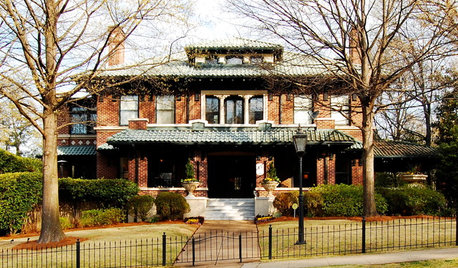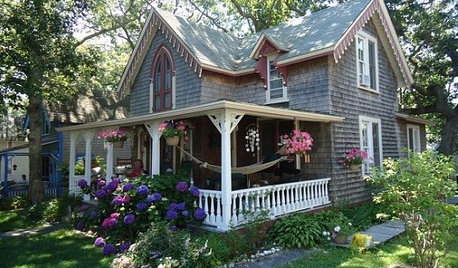Gardenias, a cure for yellowing leaves
nemosr
19 years ago
Featured Answer
Sort by:Oldest
Comments (38)
K
19 years agolast modified: 9 years agonemosr
19 years agolast modified: 9 years agoRelated Professionals
Cary Landscape Architects & Landscape Designers · Finneytown Landscape Architects & Landscape Designers · Emmaus Landscape Contractors · Fishers Landscape Contractors · Garland Landscape Contractors · Lancaster Landscape Contractors · Mesa Landscape Contractors · North Canton Landscape Contractors · Oklahoma City Landscape Contractors · Riverhead Landscape Contractors · San Rafael Landscape Contractors · Severna Park Landscape Contractors · Wallingford Landscape Contractors · Watertown Landscape Contractors · Weslaco Landscape ContractorsK
19 years agolast modified: 9 years agoroseyp8255
19 years agolast modified: 9 years agoK
19 years agolast modified: 9 years agobruggirl
19 years agolast modified: 9 years agojennbenn
19 years agolast modified: 9 years agosewnfool
19 years agolast modified: 9 years agoart777
19 years agolast modified: 9 years agoart777
19 years agolast modified: 9 years agogardnpondr
19 years agolast modified: 9 years agoDieter2NC
19 years agolast modified: 9 years agogardnpondr
18 years agolast modified: 9 years agoDallasCactiLover
18 years agolast modified: 9 years agoBumblebeez SC Zone 7
18 years agolast modified: 9 years agomlwgardener
18 years agolast modified: 9 years agobamamandopickr
18 years agolast modified: 9 years agohoneybunny2 Fox
18 years agolast modified: 9 years agocmb2006
17 years agolast modified: 9 years agoshic_2006
17 years agolast modified: 9 years agobuford
17 years agolast modified: 9 years agoqueenamy
17 years agolast modified: 9 years agojimtnc
17 years agolast modified: 9 years agocmb2006
17 years agolast modified: 9 years agojimtnc
17 years agolast modified: 9 years agothe_virginian
17 years agolast modified: 9 years agosabaari
16 years agolast modified: 9 years agoededleman
16 years agolast modified: 9 years agoDonna
16 years agolast modified: 9 years agoronatlanta_bellsouth_net
15 years agolast modified: 9 years agobev8001
15 years agolast modified: 9 years agosandra41
15 years agolast modified: 9 years agosoldbysandy
15 years agolast modified: 9 years agomaryed
15 years agolast modified: 9 years agoerleyedit_yahoo_com
12 years agolast modified: 9 years agoseachange91362
11 years agolast modified: 9 years agobonita latour
7 years ago
Related Stories

GARDENING GUIDESWhat's Wrong With My Plant? Leaves Often Hold the Clues
Learn how to identify common plant ailments by reading their leaves
Full Story
LAUNDRY ROOMSThe Cure for Houzz Envy: Laundry Room Touches Anyone Can Do
Make fluffing and folding more enjoyable by borrowing these ideas from beautifully designed laundry rooms
Full Story
KITCHEN DESIGNThe Cure for Houzz Envy: Kitchen Touches Anyone Can Do
Take your kitchen up a notch even if it will never reach top-of-the-line, with these cheap and easy decorating ideas
Full Story
CURB APPEALThe Cure for Houzz Envy: Great Front Facade Touches to Borrow
Pull up to a better view and make visitors feel welcome by perking up your home’s face
Full Story
BUDGET DECORATINGThe Cure for Houzz Envy: Living Room Touches Anyone Can Do
Spiff up your living room with very little effort or expense, using ideas borrowed from covetable ones
Full Story
MUDROOMSThe Cure for Houzz Envy: Mudroom Touches Anyone Can Do
Make a utilitarian mudroom snazzier and better organized with these cheap and easy ideas
Full Story
PRODUCT PICKSGuest Picks: Cure Style Doldrums With Swiss Cross Accessories
If your home decor could use some reviving, apply these blankets, pillows and tiles and watch it perk right up
Full Story
ARCHITECTUREStates of Style: Alabama’s Icons Leave Their Mark
In the first of a new series, discover the natural beauty, the architectural icons and some of our favorite homes deep in the heart of Dixie
Full Story
COLORBest Ways to Use the Soft Yellow Color of 2014
You may fall for PPG Pittsburgh Paints’ Turning Oakleaf if you like your hues warm, mellow and cheery
Full StorySponsored
Columbus Area's Luxury Design Build Firm | 17x Best of Houzz Winner!







nemosrOriginal Author